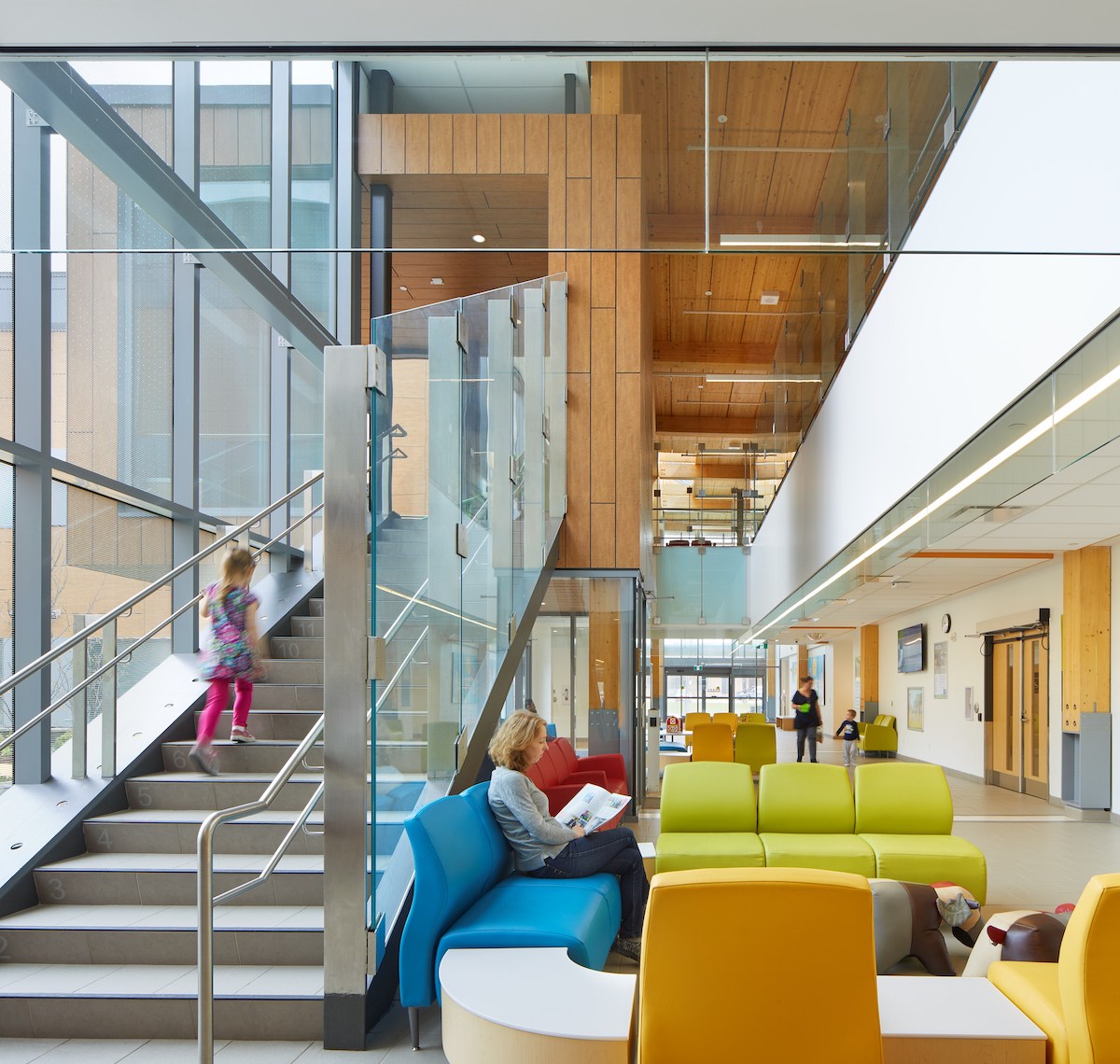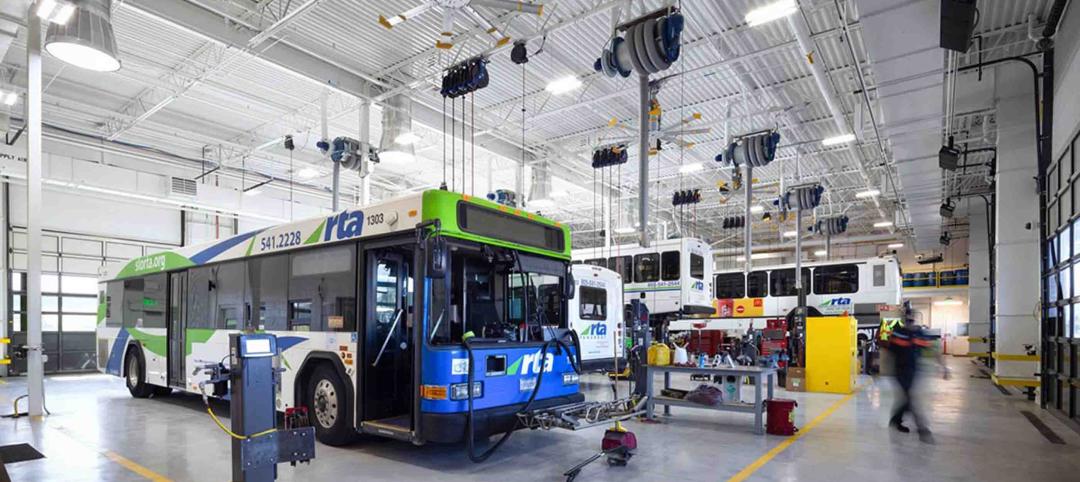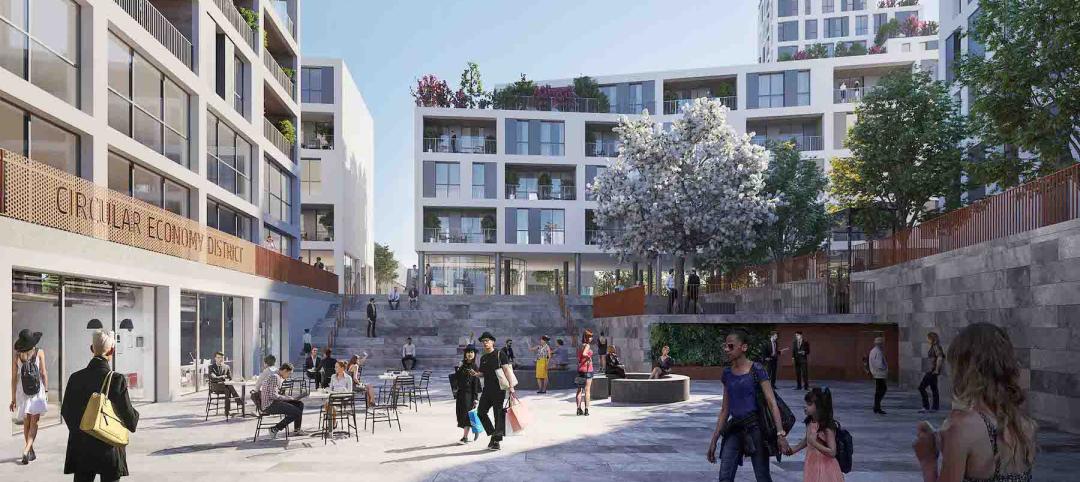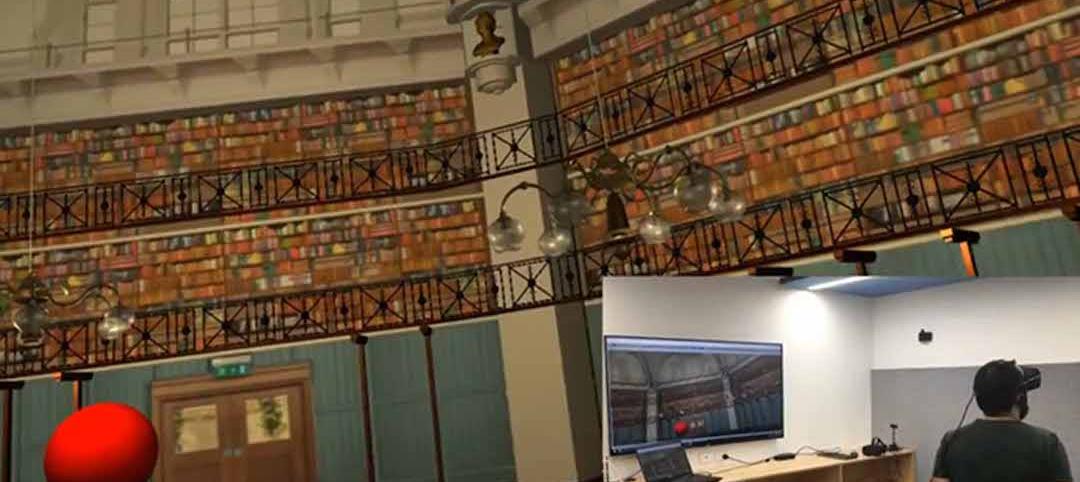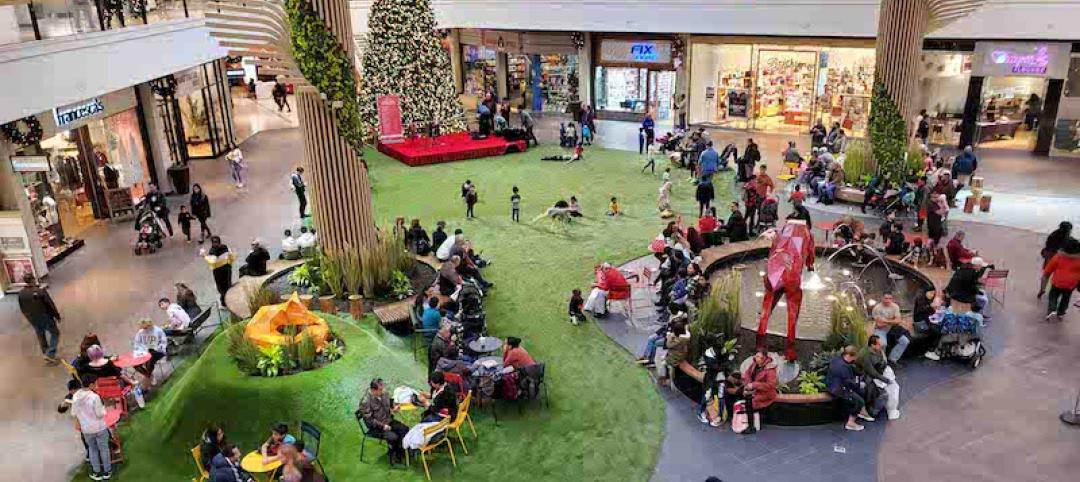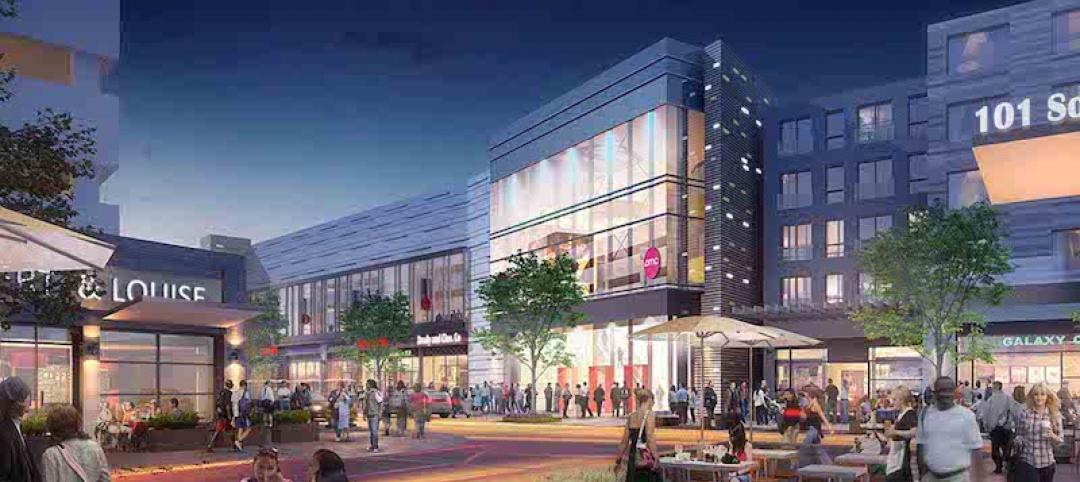Sometimes a building isn’t just a building. Occasionally, a building invites you to interact with it, injecting a moment of levity in your visit to a museum, gym, school, office, or hospital. And who appreciates those whimsical touches the most? Children. We brought this idea to our work on three new treatment centers for ErinoakKids, an organization that provides treatment, rehabilitation, and support services to children with a wide range of physical and developmental disabilities, communication disorders, and autism.
Our design at ErinoakKids focused on three pillars: play, achievement, and memory. We strove to infuse the buildings with elements of these pillars to engage ErinoakKids’ young clients.
Each of ErinoakKids’ three treatment centers—located in Mississauga, Brampton, and Oakville—gave us chances to think differently about standard building requirements and turn them into fun and engaging elements. If you’re looking at creating a dynamic healthcare space for children, here are six ways to inject creative touches into everyday design features:
1. Create playful seating: A sense of play seeps into each entrance space with fun, wavy benches. Kids might feel nervous walking into a treatment center, so we wanted to provide a playful and exciting space. We took a requirement—seating in an entrance area—and gave it a child-friendly twist.
2. Turn a staircase into a focal point: We needed to include a staircase that incorporated a large landing, since kids with mobility issues require a space to rest. Instead of developing a standard seating area on the landing, we designed a treehouse that engages both the interior spaces and the playground in the courtyard. The treehouse has become a focal point of the building. We also numbered the steps leading up to the treehouse, so children can gauge their progress while climbing the stairs. We turned a requirement for a landing into a central feature for the building, infusing play and achievement into a lively spot that stimulates a child’s imagination.
3. Inject artistic flair into your wayfinding: We approached wayfinding and art with play, achievement, and memory in mind. Each corridor at ErinoakKids features an accent color to help orient patients and staff. We decided to leave one wall white in every corridor, to create a blank canvas for artwork by patients in the form of hand-painted tiles. These "memory tiles" let kids leave their unique mark on the building—something especially meaningful for patients that have been coming to ErinoakKids for years.
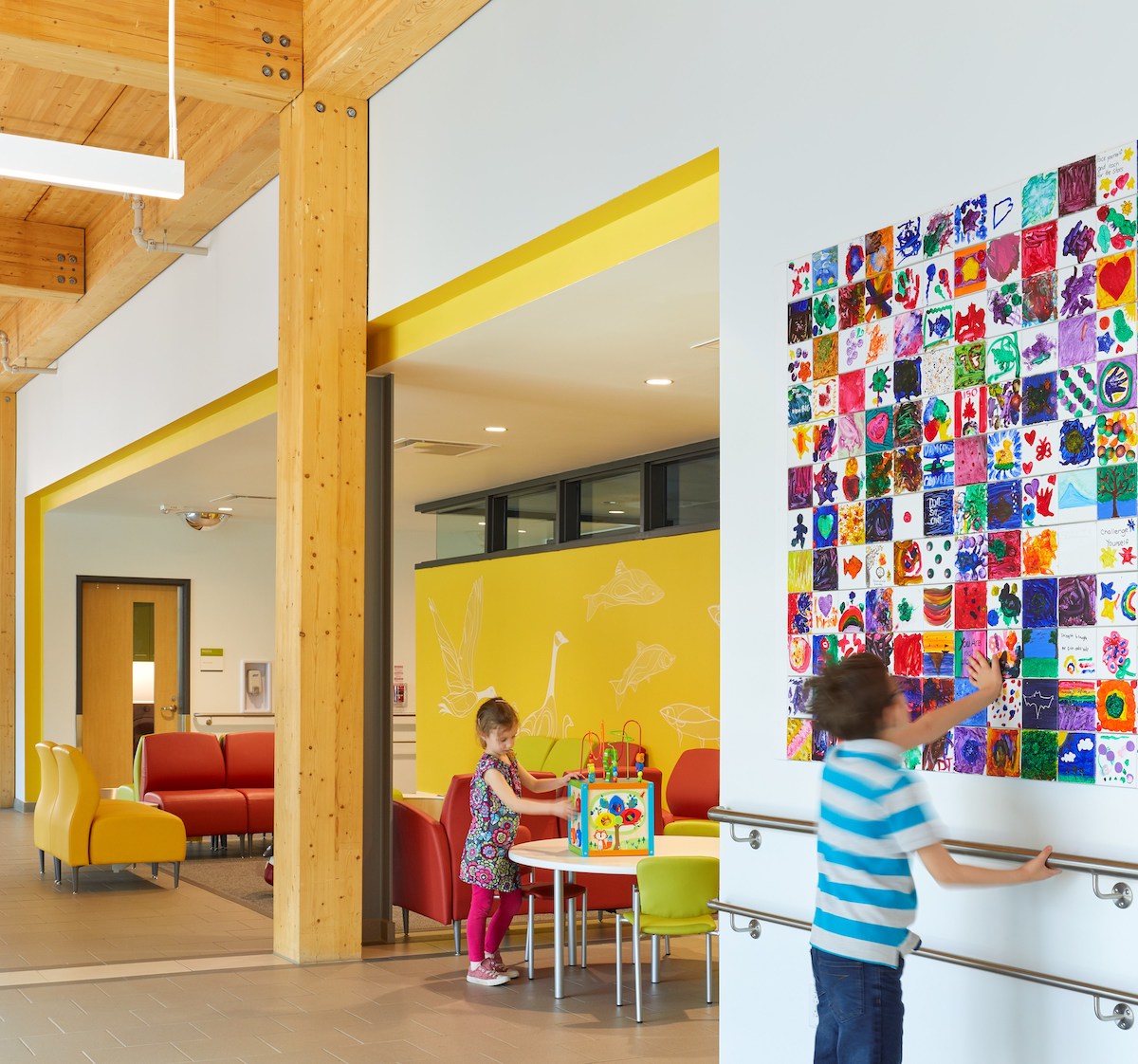 "Memory tiles," seen at the right side of the photo, let kids leave a piece of themselves on the building–something especially meaningful for clients that have been coming to ErinoakKids for years. Photo courtesy Stantec
"Memory tiles," seen at the right side of the photo, let kids leave a piece of themselves on the building–something especially meaningful for clients that have been coming to ErinoakKids for years. Photo courtesy Stantec
4. See possible disruptions as play opportunities: The Mississauga location presented us with a unique opportunity—how would we deal with the train tracks nearby? Are the trains an irritating disruption, or a form of entertainment? We took the second perspective. Instead of blocking the view of passing trains, we decided to embrace our inner sense of play by designing a trainspotting nook. It’s become a memorable feature of the play area. Kids might feel nervous walking into a treatment center, so we wanted to provide a playful and exciting space.
5. Give kids an inside look: What do the inner workings of an elevator look like? At ErinoakKids, patients can get a glimpse at building machines that are usually unseen. We designed "truth windows" throughout the treatment centers—in mechanical rooms, ceilings, and elevators—to teach kids about the building systems inside. Sections of the buildings contain see-through plexiglass surfaces so kids can learn about building systems inside. We designed brightly colored pipes and added timed lights to illuminate the mechanics and give kids a peek into the inner workings of the building.
6. Turn noise reduction features into fun elements: The pool at the Brampton location required us to design sound baffling to reduce the level of noise coming from the pool area. We took that requirement and gave it a playful twist by selecting colorful acoustic panels and creating a three-dimensional sculpture that resembles flying kites. The kites also serve a secondary purpose, as they can distract kids who need to spend most of their time in the pool on their backs for treatment.
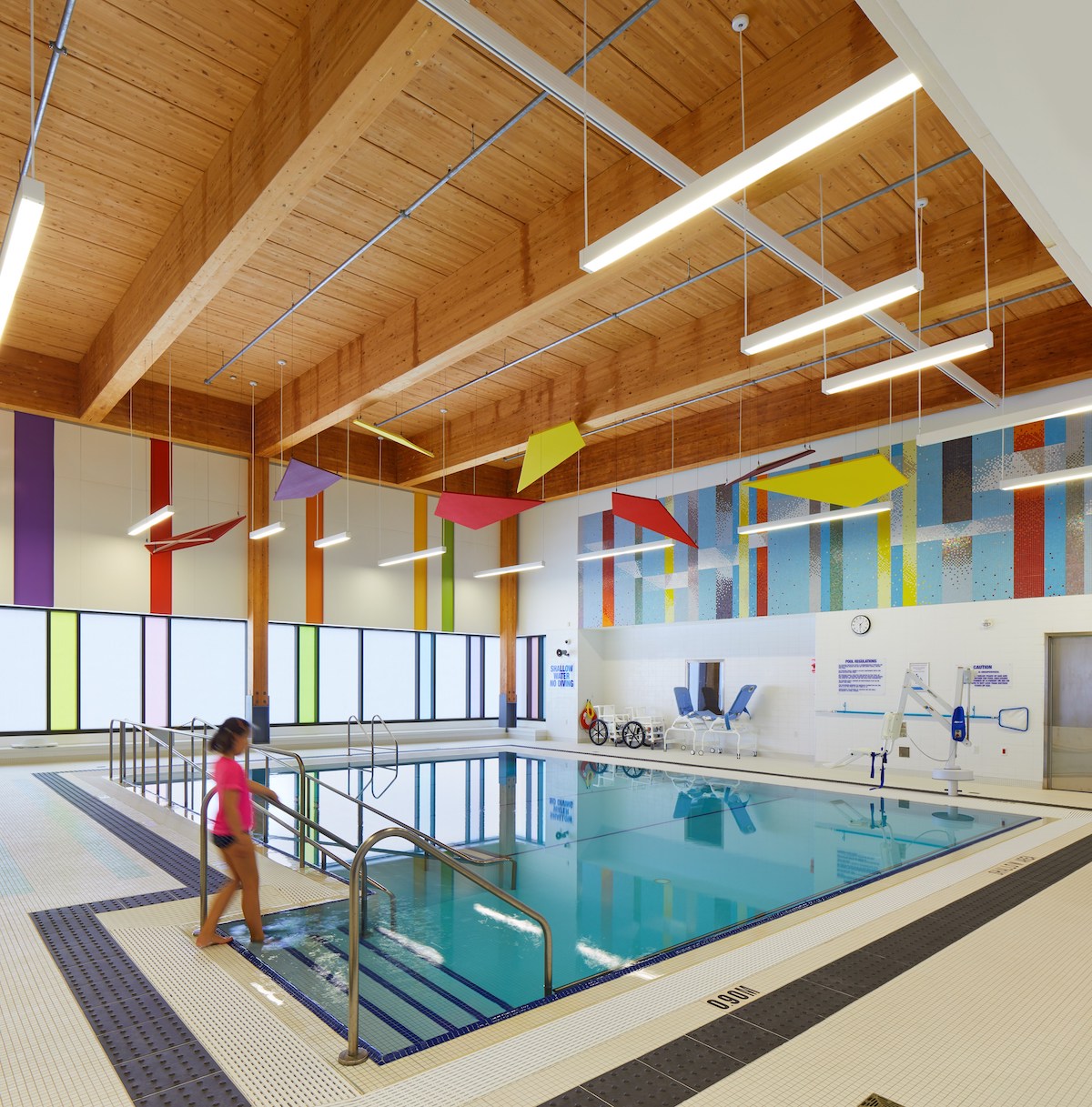 This image shows the colorful kites that function as sound baffling for the pool area at ErinoakKids’ Brampton location. Photo courtesy Stantec
This image shows the colorful kites that function as sound baffling for the pool area at ErinoakKids’ Brampton location. Photo courtesy Stantec
If you’re tasked with working on a similar healthcare space, we hope you’re able to turn project requirements into occasions for joy and curiosity. Many people think of a building as a static structure, but a building can teach, entertain, and heal. It can invite you to behave in a different way.
Infuse your project with meaningful pillars—like play, memory, and achievement—and you’ll be rewarded with a satisfied client and happy users. Now, make that building come alive.
ErinoakKids was delivered via public private partnership (P3) procurement. Stantec served as the Proponent’s Designer and Architect of Record. Parkin Architects served as the Planning & Design Compliance (PDC) Architect.
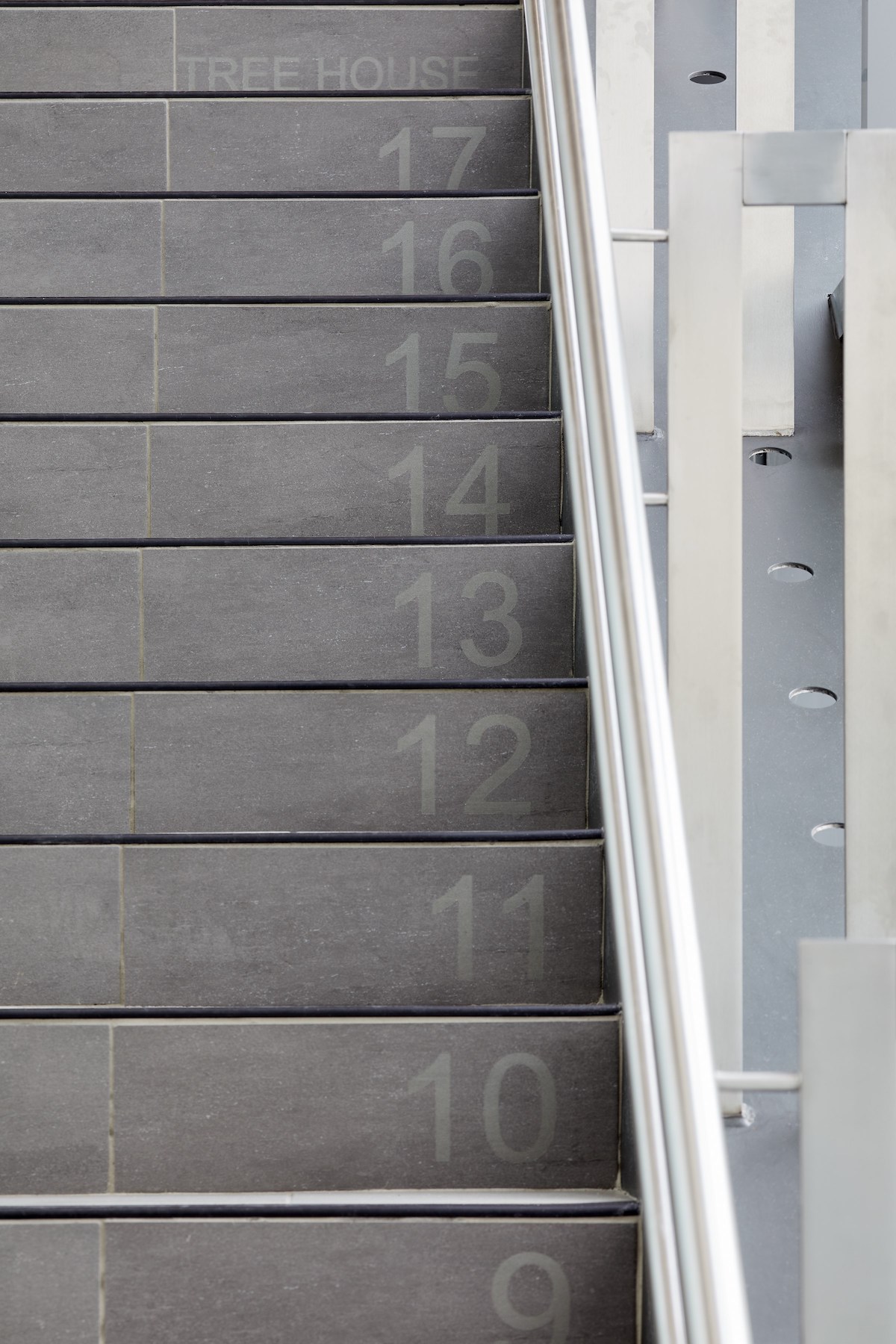 Numbered steps help children gauge their progress while climbing the stairs. Photo courtesy Stantec
Numbered steps help children gauge their progress while climbing the stairs. Photo courtesy Stantec
About the Authors
Iva Radikova is a strong conceptual thinker with an extensive background in healthcare, education, mixed-use and corporate workplace. She’s an interior design lead in our Toronto office, and much of her work is focused on large, multi-layered architecture and interiors projects.
Olivera Sipka is a senior architect focused on healthcare design and has a special interest in developing the design of pediatric facilities as well as designing for behavioral health and senior care. Making sure that her designs always have a positive impact is Olivera’s goal.
More from Author
Stantec | Mar 18, 2024
A modular construction solution to the mental healthcare crisis
Maria Ionescu, Senior Medical Planner, Stantec, shares a tested solution for the overburdened emergency department: Modular hub-and-spoke design.
Stantec | Nov 20, 2023
8 strategies for multifamily passive house design projects
Stantec's Brett Lambert, Principal of Architecture and Passive House Certified Consultant, uses the Northland Newton Development project to guide designers with eight tips for designing multifamily passive house projects.
Stantec | Apr 10, 2023
Implementing human-centric design in operations and maintenance facilities
Stantec's Ryan Odell suggests using the human experience to advance OMSF design that puts a focus on wellness and efficiency.
Stantec | Jul 6, 2022
5 approaches to a net zero strategy that communities can start right now
Whether your community has started on a plan or is still considering net zero, now is the time for all of us to start seriously addressing climate change.
Stantec | Feb 14, 2022
5 steps to remake suburbs into green communities where people want to live, work, and play
Stantec's John Bachmann offers proven tactic for retrofitting communities for success in the post-COVID era.
Stantec | Feb 8, 2022
How gaming technology is changing the way we design for acoustics
Adding 3D sound from gaming engines to VR allows designers to represent accurate acoustic conditions to clients during design.
Stantec | Dec 15, 2021
EV is the bridge to transit’s AV revolution—and now is the time to start building it
Thinking holistically about a technology-enabled customer experience will make transit a mode of choice for more people.
Stantec | Sep 3, 2021
Passports to a net-zero carbon future
How materials passports can help designers achieve social value and net-zero carbon.
Stantec | Aug 25, 2021
The mall of the future: Less retail, more content
For the mall to survive, it will need to embrace nontraditional uses and “messy vitality.” Here’s how to do it.
Stantec | May 21, 2021
Kick-starting the rebirth of North America’s malls
Our outdated malls can be remade for a renaissance. Here’s how to get started.

